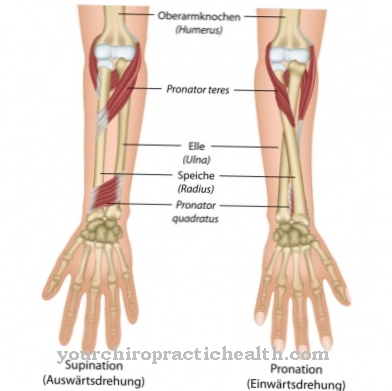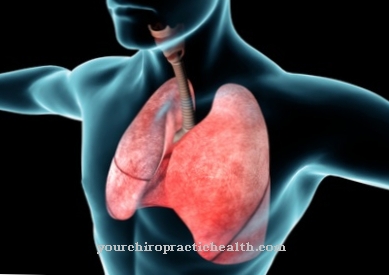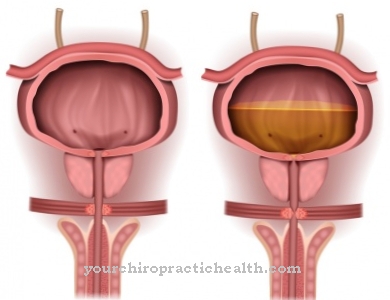The act of swallowing consists of a preparatory phase and three transport phases. The first phase corresponds to oral transport phase the food pulp that triggers the swallowing reflex. Swallow-reflective disorders of the oral transport phase are often directly related to neurogenic diseases or muscle and connective tissue diseases.
What is the oral transport phase?

People swallow between 1,000 and 3,000 times a day. When swallowed, the food pulp is transported through the throat and esophagus into the stomach. At the same time, the act of swallowing cleanses the esophagus and removes, for example, gastric acid that has got into it and which could damage the sensitive mucous membrane of the esophagus.
The act of swallowing consists of different phases. The preparation for swallowing takes place under arbitrary control, for example chewing. The swallowing reflex is activated by irritating the base of the tongue. A reflex arc leads to the act of swallowing, which is opened by the oral transport phase. All subsequent processes are beyond the voluntary influence.
A total of 26 muscle pairs are involved in the act of swallowing. In addition to the anatomical structures of the oral cavity and their boundaries, the pharynx, larynx, esophagus and stomach structures play a role in swallowing. The oral cavity and its adjacent structures play the main role in the oral transport phase of swallowing.
All swallowing movements and the interaction of the muscle pairs involved are coordinated by the so-called swallowing center of the brain. This center is located in the brain stem and includes higher suprabulbar and cortical areas of the brain.
Function & task
In the narrower definition, each act of swallowing consists of three phases, which are also known as transport phases. Food intake precedes the three transport phases. The first transport phase corresponds to the oral transport phase through the oral structures. This is followed by a pharyngeal transport phase and an esophageal transport phase. The oral transport phase of swallowing is largely beyond arbitrary control. Only a small part of the movements involved is arbitrary and can be consciously controlled. After completing the oral preparation phase, the lips close. In this way, no more saliva can escape from the mouth. In addition, the lip closure prevents air from entering the mouth so that no air is swallowed down.
Then the cheek muscles contract. At the beginning of the actual swallowing process, the tongue presses against the hard palate. In this way, the hard palate serves as an abutment during the swallowing process. The pulp from chewed food now moves towards the throat. This migration takes place by means of backward, undulating movements that are supported by the styloglossus and hyoglossus muscles.
The two muscles pull the tongue backwards in a wave-like manner from the hard palate. This movement pushes the food pulp into the throat through the narrow throat.
The food pulp finally touches the base of the tongue or the back wall of the throat. Sensitive sensory cells from the group of mechanoreceptors are located in these structures. The sensory cells register the touch stimulus and transmit the stimulus to the central nervous system via afferent nerve tracts. In the central nervous system, the excitation is switched to motor nerves and travels along these nerves to the muscles that carry out the actual swallowing process.
Once the food comes into contact with the base of the tongue or the back of the throat, the swallowing process can no longer be arbitrarily controlled during the oral phase. The muscle movements triggered later are reflexive and thus evade voluntary control.
You can find your medication here
➔ Medicines for sore throats and difficulty swallowingIllnesses & ailments
Swallowing disorders are summarized under the term dysphagia. Especially for disorders of the oral transport phase in the sense of a restricted or absent swallowing reflex, neurogenic connections and diseases are the most common causes. The swallowing reflex in the oral transport phase can be disturbed as a result of a stroke, a traumatic brain injury, meningitis or a degenerative brain disease such as Parkinson's disease. Such dysphagia are just as common in the context of the autoimmune disease multiple sclerosis.
The diseases and phenomena mentioned lead mainly to swallowing disorders when they injure tissue of the swallowing center. In most cases, tissue injuries in the brain lead to permanent damage. The brain tissue is highly specialized and often cannot fully recover from damage. In addition, injuries caused by the diseases and events mentioned leave scars. In the area of these scars, the brain's nerve cells are no longer fully functional.
A disruption of the oral transport phase does not always have to be based on a neurogenic cause. Muscle diseases such as muscle wasting or connective tissue diseases such as scleroderma also cause swallowing problems. The same applies to tumors in the throat and spinal cord or brain area.
The oral transport phase can also be made more difficult by congenital malformations, such as a cleft lip and palate. Operations or serious injuries in the mouth area can just as easily have negative effects on the oral transport phase.
In older people, disorders of the oral transport phase are often to be interpreted as an age-physiological phenomenon without any disease value. In many cases, people over a certain age no longer swallow efficiently. This is often referred to as presbyphagia. The older people get, the more the reaction time of their muscles and nerves is delayed. Reduced muscle strength due to natural muscle breakdown in old age, age-related tooth loss, age-physiologically dry mucous membranes and ossification of the jaw interfere with the act of swallowing. In addition, coordination disorders can occur particularly in old age, which make swallowing and the oral transport phase difficult. Targeted swallowing training can often improve dysphagia.
























.jpg)



